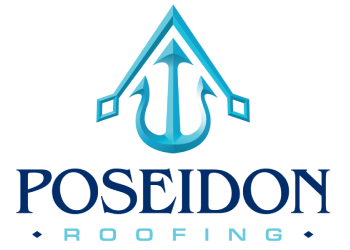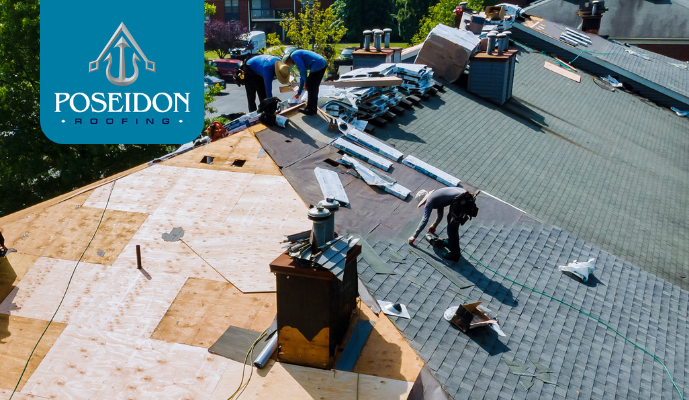When it comes to new construction roofing, choosing the right materials and ensuring proper installation is crucial for the durability and longevity of your new build. A well-selected roofing system can safeguard your investment, enhance energy efficiency, and reduce the need for frequent repairs down the line. In this blog, we’ll explore the essential aspects of construction roofing that will help you make informed decisions for a new construction roofing project. From material choices to working with roofing contractors, you’ll learn what it takes to build a sturdy roof that stands the test of time.
Why Choosing the Right Roofing Matters for New Construction
A new construction roofing project is more than just a functional element of your building; it plays a pivotal role in protecting the entire building envelope. With advancements in roofing materials and design, selecting the right roofing system can significantly impact the building’s energy efficiency, aesthetics, and overall safety. Unlike an existing roof, which might have limitations due to its age or wear, a new construction roof allows you to start fresh and make the best choice for your specific needs.
The Role of Properly Installed Roofing
A properly installed roof not only offers protection against the elements but also prevents issues like leaks, structural damage, and energy inefficiency. The importance of choosing a skilled roofing contractor cannot be overstated, as the quality of the roof installation directly affects the lifespan of the roof. A new construction roof installation should be meticulously planned, with attention to the smallest details to ensure maximum performance and durability.
Key Considerations for New Construction Roofing Projects
When embarking on a construction roofing project, there are several factors to consider to ensure the longevity and effectiveness of your roof. Below are some of the key considerations to keep in mind:
1. Choosing the Right Roofing Materials
The choice of roofing materials is arguably the most important decision in your new construction project. Different materials offer varying levels of durability, cost-effectiveness, and aesthetic appeal. Some of the most popular roofing materials include:
- Asphalt Shingles: These are a popular choice for residential buildings due to their affordability and ease of installation. Asphalt shingles are available in various colors and styles, making them versatile for different architectural designs.
- Metal Roofing: Known for its longevity and durability, metal roofing is an excellent choice for both residential and commercial buildings. It’s resistant to extreme weather conditions, and it can last up to 50 years with minimal maintenance.
- Flat Roof: Often used in commercial buildings, flat roofs offer easy accessibility and are ideal for installing solar panels or other energy-efficient technologies. However, they do require regular maintenance to prevent pooling water and leaks.
When selecting a roofing material, consider the local climate, building codes, and your long-term maintenance expectations. Each material has its pros and cons, so it’s essential to align your choice with the specific needs of your construction project.
2. Durability and Lifespan
For any construction roof, durability is a top priority. Different roofing materials have varying lifespans. For example, asphalt shingles last 20-30 years, while metal roofing can last up to 50 years or more. It’s important to weigh the upfront costs against the potential savings in repairs or roof replacement down the line.
3. Energy Efficiency
Energy efficiency is becoming an increasingly important factor in construction projects, especially as building standards evolve to meet sustainability goals. Certain roofing systems, such as cool roofs or metal roofing, are designed to reflect more sunlight and absorb less heat, which can significantly reduce cooling costs in hot climates. Installing an energy-efficient roof can save you money in the long run and contribute to a more sustainable building.
Types of Roofing Systems for New Construction Projects
1. Pitched Roofing Systems
Pitched roofs are a common choice for residential new construction projects. These systems use materials like asphalt shingles, tiles, or metal panels, offering durability and weather resistance. A new roof with a steep pitch is ideal for areas with heavy rainfall or snow, as it allows for better drainage and prevents water accumulation.
2. Flat Roofing Systems
As mentioned earlier, flat roofs are widely used in commercial buildings. These systems typically use materials like single-ply membranes, built-up roofs (BUR), or modified bitumen. While flat roofs are more susceptible to water damage, they are often preferred for their modern aesthetic and the ease of incorporating additional features such as rooftop gardens or solar panels.
3. Green Roofing Systems
Green roofs, also known as living roofs, are becoming a popular choice for environmentally-conscious builders. They involve adding vegetation on the rooftop, which helps improve insulation, manage stormwater, and reduce the urban heat island effect. While they can be more expensive to install, green roofs offer long-term environmental and economic benefits, making them an excellent option for modern construction projects.
Working with Roofing Contractors for a Seamless Project
No matter how great the roofing materials are, the success of a new construction roofing project largely depends on the expertise of the roofing contractor you choose. Professional roofing contractors bring invaluable experience to the table, ensuring that every aspect of the roofing project is handled with precision. From the initial design phase to the final roof installation, working with reputable roofing contractors ensures that your construction roofing project meets all safety and building code requirements.
How to Choose the Right Roofing Contractor
- Experience and Specialization: Look for contractors with experience in new construction roofing services. Specialized knowledge in construction projects is crucial for getting a high-quality, durable roof.
- Licenses and Insurance: Ensure that the roofing contractor is licensed and insured to protect yourself from any potential liabilities during the roof installation process.
- Portfolio and References: A reliable contractor should provide you with a portfolio of previous projects and references from satisfied clients. This gives you a clear understanding of their capabilities.
Maintaining Your New Construction Roof
Once your new roof is installed, regular maintenance is essential to ensure its longevity. Proper inspections, cleaning, and minor repairs can prevent costly damage and extend the life of your roofing system. Common maintenance tasks include clearing debris, checking for leaks or damaged shingles, and inspecting flashing around chimneys or vents.
When to Consider a Roof Replacement
Even with the best roofing materials and installation, roofs have a limited lifespan. If your roof begins to show signs of severe wear or damage, it may be time to consider a roof replacement. It’s important to keep track of your roof’s age and perform regular inspections to determine when it’s time for an upgrade. A roof replacement can be a significant investment, but it ensures that your building remains protected for years to come.
Roofing Services Provided by Poseidon Roofing
For high-quality, durable new construction roofing services, Poseidon Roofing is your go-to expert. With years of experience in construction roofing, we offer tailored solutions for both residential and commercial projects. From choosing the right roofing materials to delivering expert roof installation, Poseidon Roofing ensures a properly installed roof that stands up to the elements and provides long-lasting protection for your home or business.

